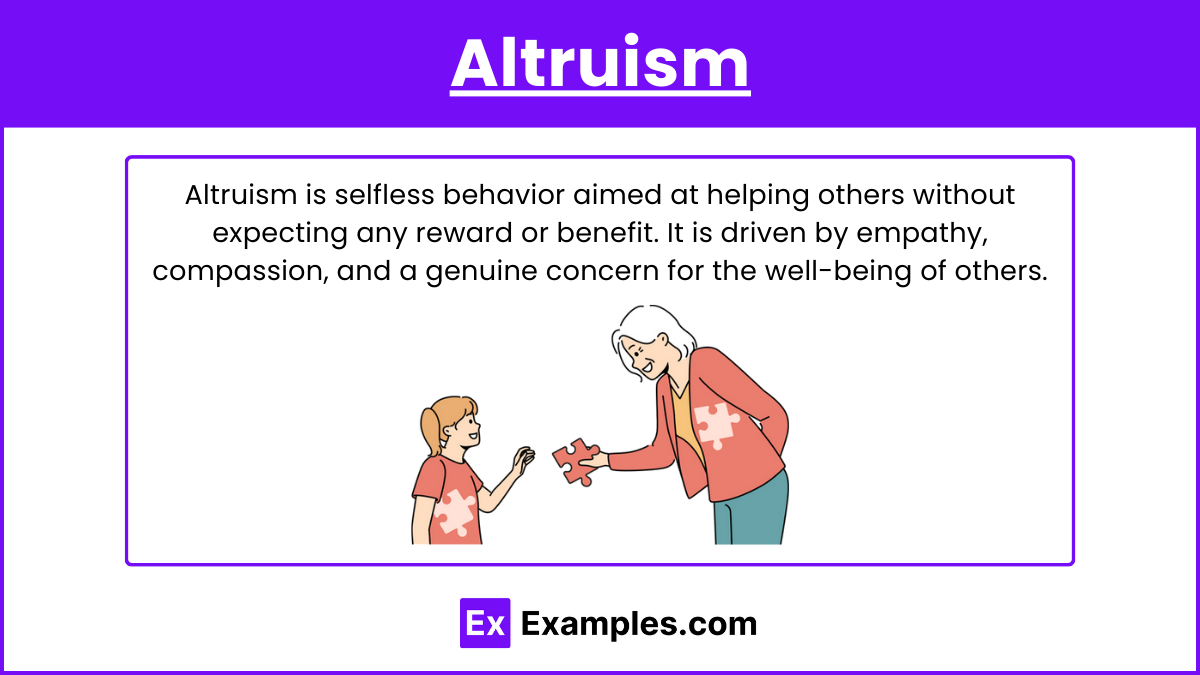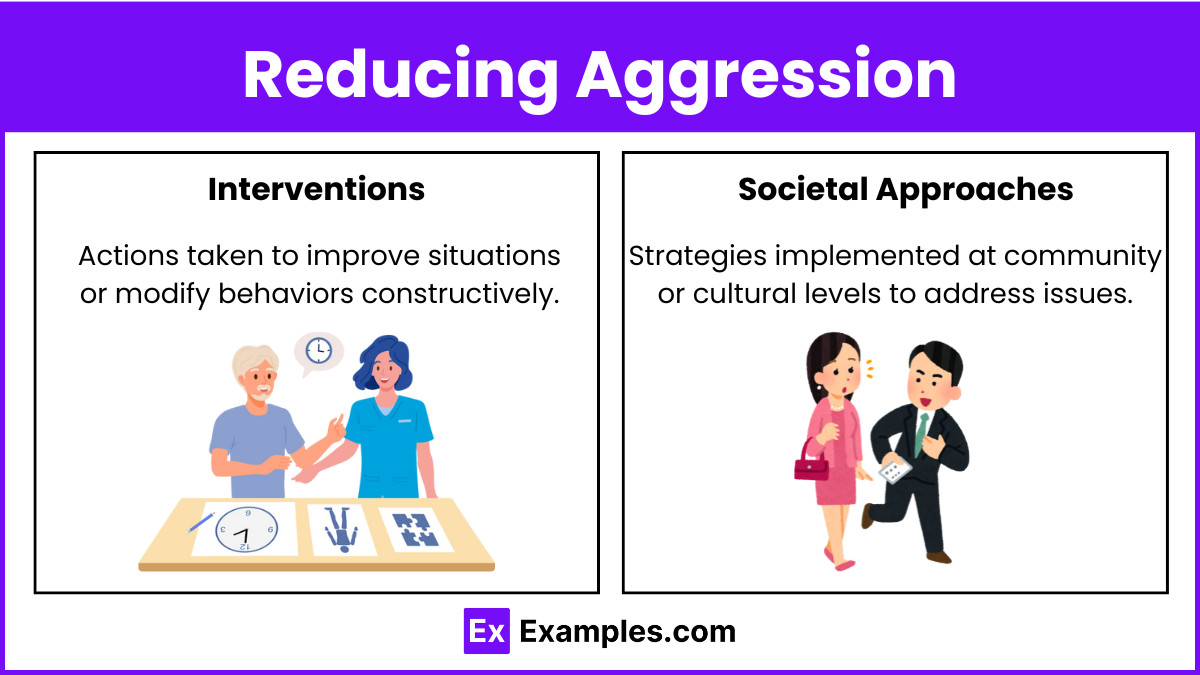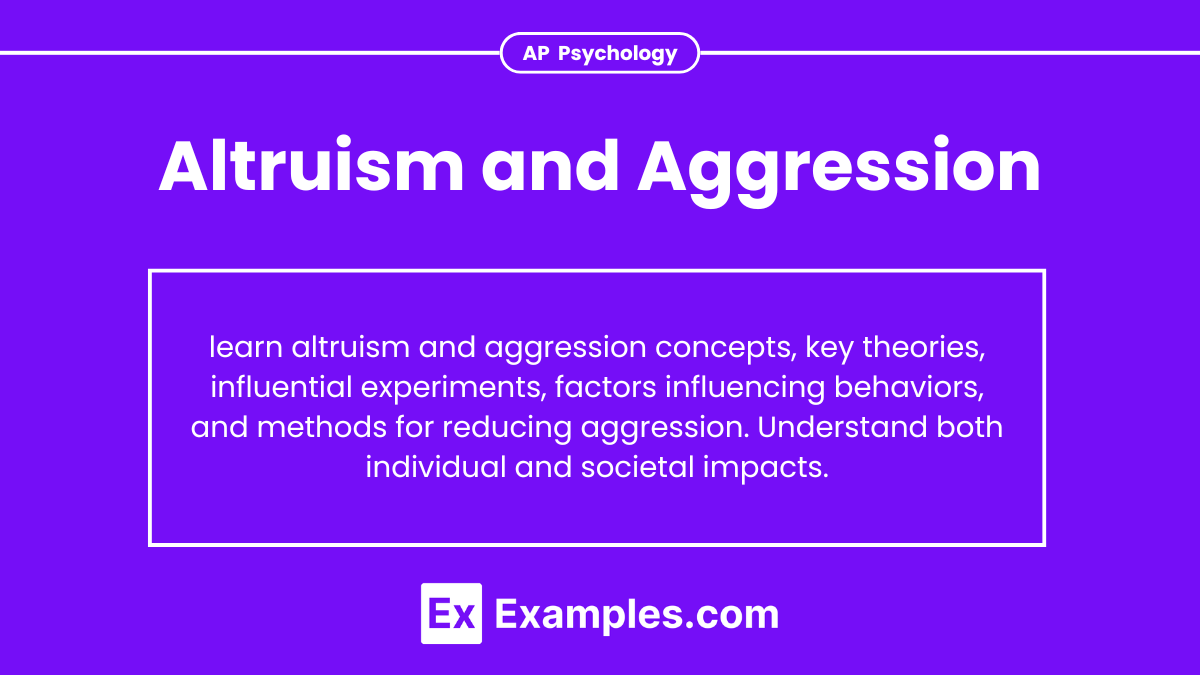Understanding altruism and aggression is crucial for students in AP Psychology. Altruism refers to selfless actions intended to benefit others, while aggression involves behaviors meant to harm. In AP Psychology, these behaviors are influenced by various factors including biological, psychological, and sociocultural elements. Key theories, such as the empathy-altruism hypothesis and the frustration-aggression hypothesis, offer insights into these complex behaviors. Recognizing the impact of situational and personal factors, along with notable experiments, is essential for a comprehensive grasp of these topics.
Learning Objectives
Learn the definitions and key concepts of altruism and aggression, including prosocial behavior and types of aggression. Learn the theories explaining these behaviors, such as the evolutionary, social exchange, and empathy-altruism theories for altruism, and biological, psychological, and sociocultural theories for aggression. Familiarize yourself with influential experiments like Darley and Latané’s bystander studies and Bandura’s Bobo doll experiment. Understand factors influencing these behaviors and methods for reducing aggression.
Altruism

Definition: Altruism is the selfless concern for the well-being of others. It involves actions that benefit others at a cost to oneself.
Key Concepts in Altruism
Prosocial Behavior
Actions intended to benefit others.
Includes behaviors like helping, sharing, donating, and volunteering.
Theories of Altruism
Evolutionary Theory
Suggests that altruism has evolved because it enhances the survival of genes.
Kin Selection: We are more likely to help relatives to ensure the survival of shared genes.
Reciprocal Altruism: Helping others with the expectation that they will help us in return.
Social Exchange Theory
Proposes that human interactions are transactions aiming to maximize rewards and minimize costs.
We help others when the benefits outweigh the costs.
Empathy-Altruism Hypothesis
Suggests that altruistic behavior is driven by empathy.
When we feel empathy for others, we are motivated to help them, regardless of the personal cost.
Factors Influencing Altruism
Personal Factors
Empathy: The ability to understand and share the feelings of another.
Mood: People are more likely to help when they are in a good mood.
Personality: Some people have a more altruistic personality.
Situational Factors
Bystander Effect: The tendency for individuals to be less likely to help in an emergency when others are present.
Social Norms: Cultural norms that dictate helping behavior, such as the norm of reciprocity (help those who help you) and the norm of social responsibility (help those who are dependent and in need).
Notable Experiments
Darley and Latané's Bystander Intervention Studies
Explored the bystander effect and diffusion of responsibility.
Found that individuals are less likely to help when others are present.
Batson’s Empathy-Altruism Experiment
Showed that individuals who felt empathy for a person in need were more likely to help them.
Altruism in Practice

Helping Behavior in Emergencies
Influenced by factors such as the number of bystanders, perceived danger, and personal responsibility.
Long-term Altruism
Involves sustained efforts to help others, such as volunteering or donating to charity.
Aggression

Definition: Aggression is behavior intended to harm another individual who is motivated to avoid that harm.
Key Concepts in Aggression
Types of Aggression
Hostile Aggression: Driven by anger with the goals and objectives of harming the target.
Instrumental Aggression: Harmful behavior that is a means to some other end.
Relational Aggression: Non-physical aggression that harms others through manipulation of relationships.
Theories of Aggression
Biological Theories
Genetic Influences: Aggression can be inherited.
Neural Influences: Certain brain areas (e.g., amygdala) are involved in aggression.
Biochemical Influences: Hormones (e.g., testosterone) and substances (e.g., alcohol) can increase aggression.
Psychological Theories
Frustration-Aggression Hypothesis: Aggression is the result of blocking, or frustrating, a person's efforts to attain a goal.
Social Learning Theory: Aggression is learned through observing and imitating others (modeling), and through rewards and punishments.
Sociocultural Theories
Cultural Influences: Some cultures promote aggression as an acceptable behavior.
Media Influences: Exposure to violent media can increase aggressive behavior.
Factors Influencing Aggression
Individual Factors
Personality: Traits such as irritability and hostility.
Gender: Males tend to exhibit more physical aggression.
Environmental Factors
Heat: Higher temperatures are associated with increased aggression.
Crowding: High population density can lead to increased aggression.
Provocation: Being provoked or insulted can trigger aggression.
Notable Experiments
Bandura’s Bobo Doll Experiment
Demonstrated that children imitate aggressive behavior observed in adults.
Milgram's Obedience Study
Showed that people can engage in aggressive behavior when instructed by an authority figure.
Zimbardo's Stanford Prison Experiment
Revealed how situational factors and assigned roles can lead to aggressive behavior.
Reducing Aggression

Interventions
Cognitive-Behavioral Therapy (CBT): Helps individuals understand and change their aggressive thoughts and behaviors.
Anger Management Programs: Teach techniques to control anger and reduce aggressive responses.
Social Skills Training: Helps individuals develop non-aggressive ways of interacting with others.
Societal Approaches
Education: Promoting empathy and conflict resolution skills in schools.
Policy Changes: Implementing stricter laws and regulations to reduce violent behavior.


